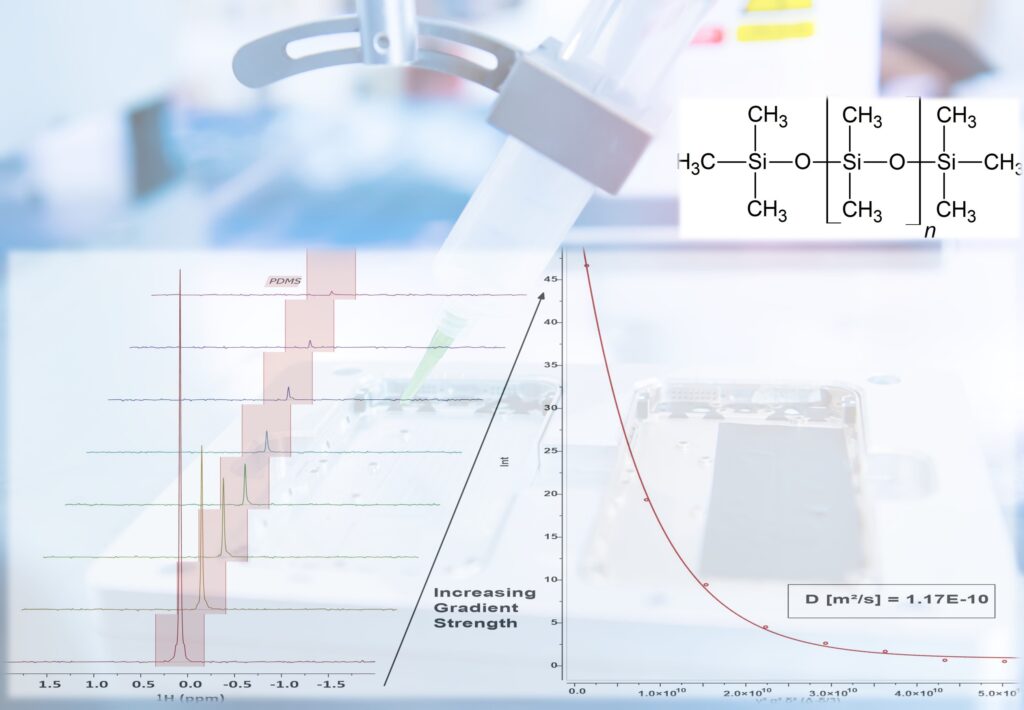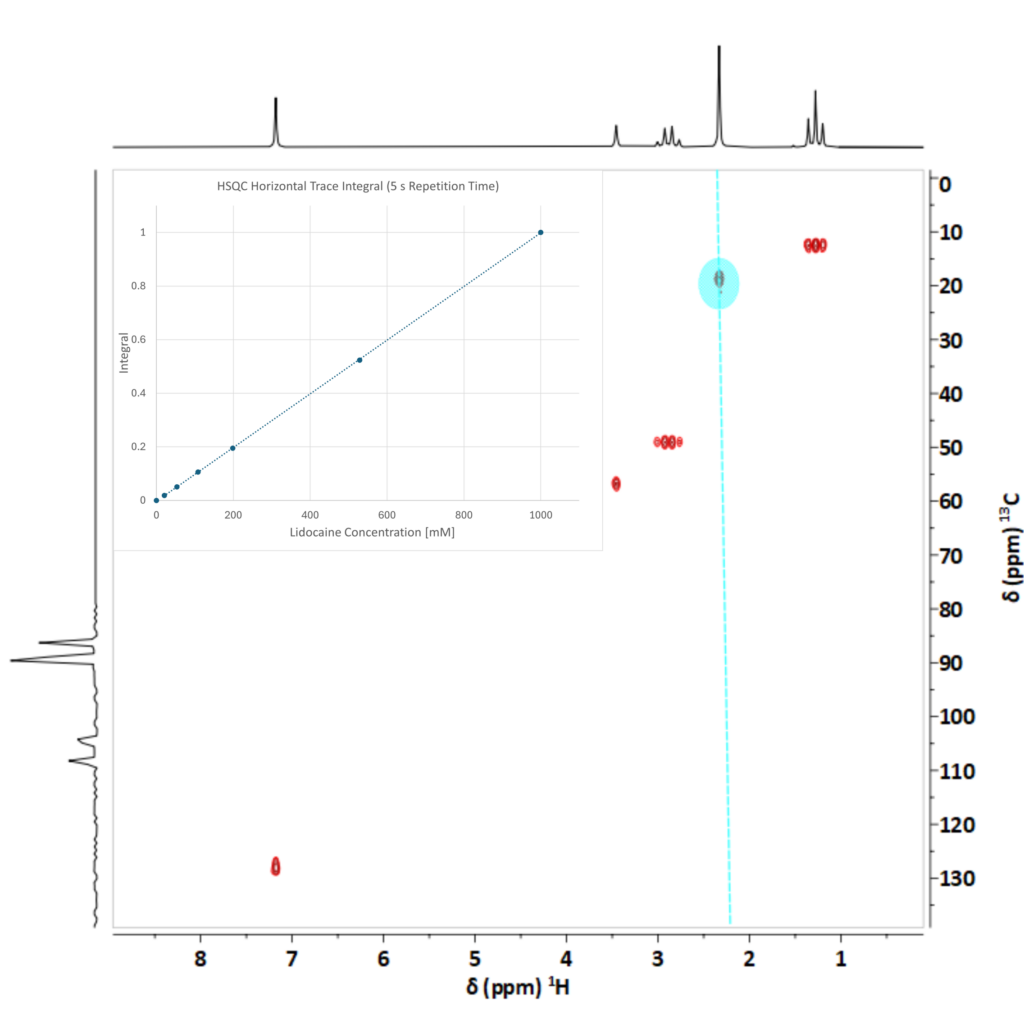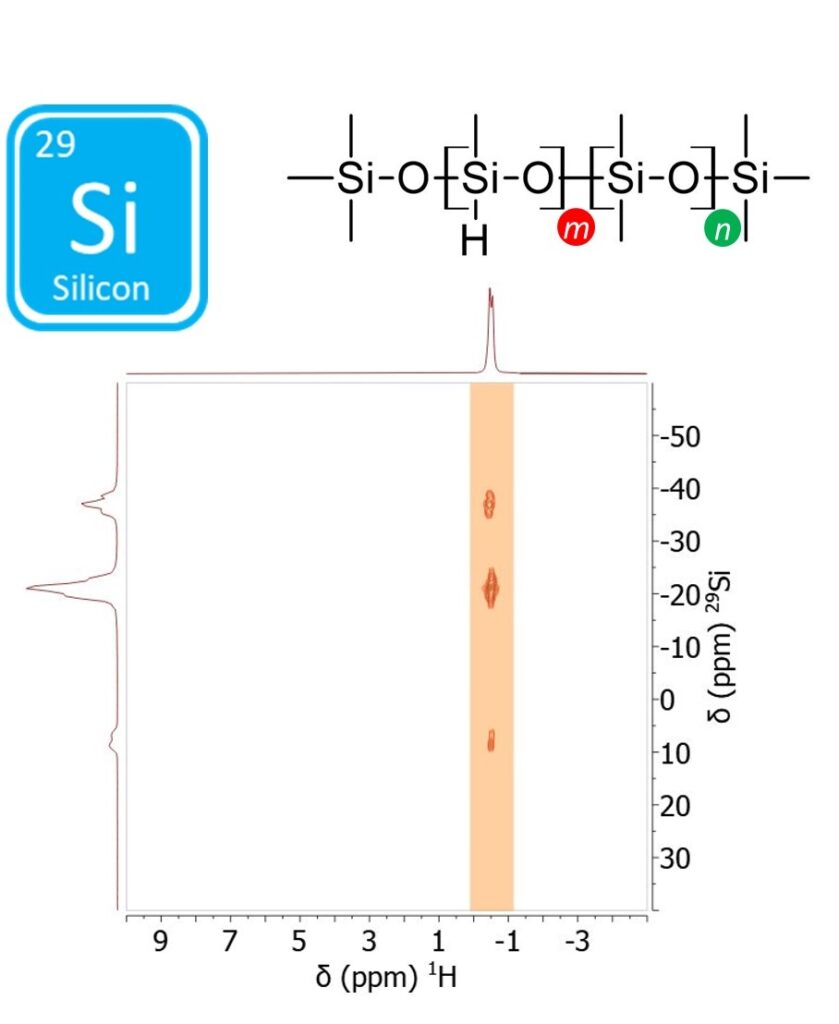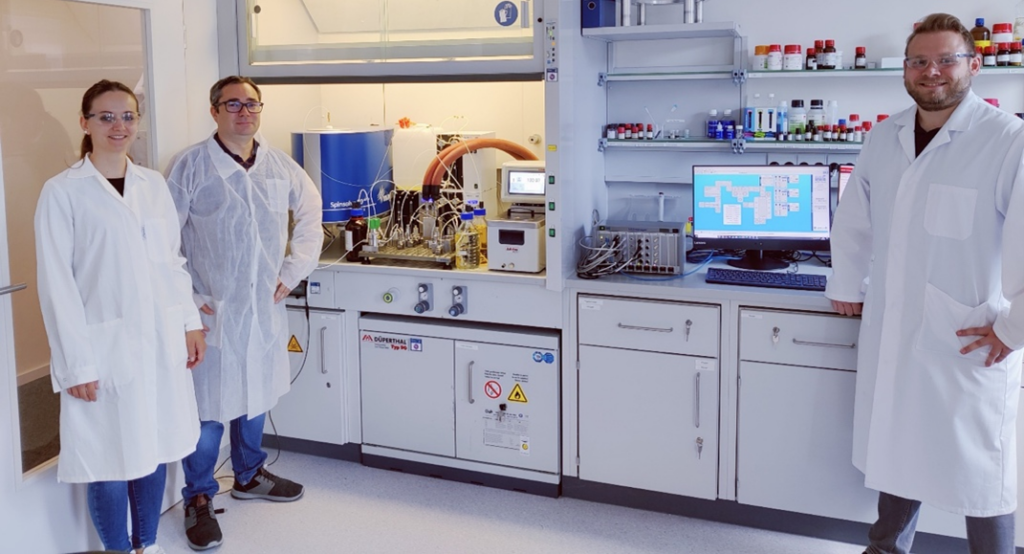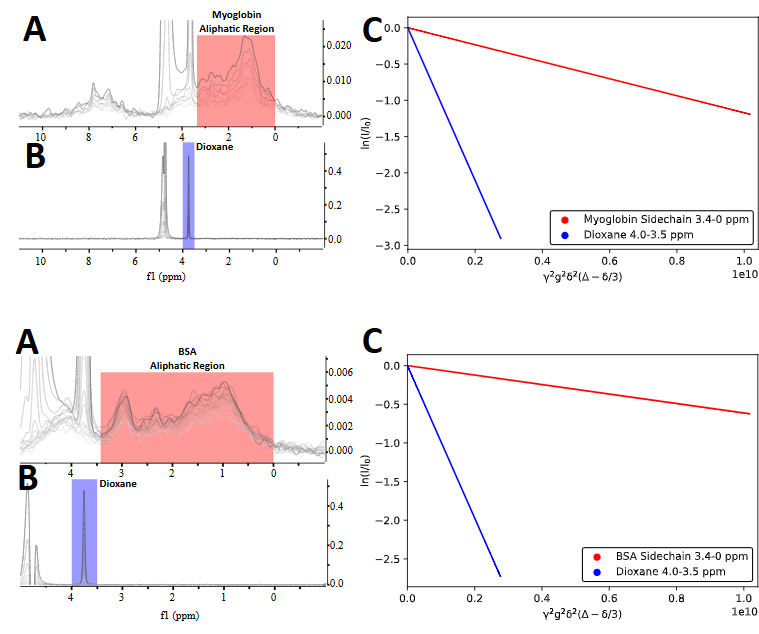Rapid molecular weight determination of Polydimethylsiloxanes (PDMS)
Utilizing PGSTE diffusion measurements for molecular weight determination by benchtop NMR In a previous application note, we discussed how the molecular weight of two PDMS polymers can be measured via end-group analysis in 1D ²⁹Si-NMR. Building on that discussion, this study focuses on the use of diffusion NMR spectroscopy to determine the molecular weight of …
Rapid molecular weight determination of Polydimethylsiloxanes (PDMS) Read More »
